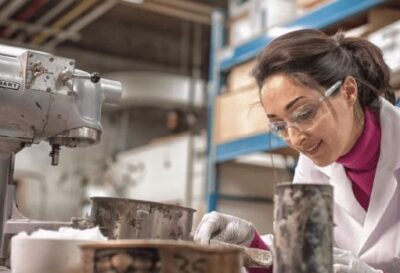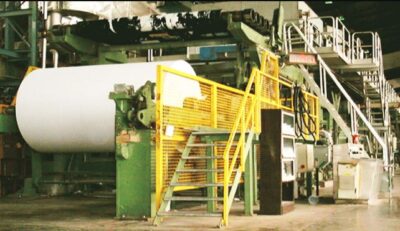Kaolin Clay’s Role in Research and Development

Kaolin clay has long been utilized by various industries as an invaluable mineral. Renowned for its versatile properties and use across numerous fields ranging from ceramic and Paper Industry to environmental sciences and more, kaolin remains at the center of research and development activities in many ways. But what exactly makes kaolin so significant in R&D applications? Let’s dive deeper into its many uses!
What is Kaolin Clay?
Kaolin clay (commonly referred to as China clay) is an adaptable mineral composed of kaolinite. Like any good mineral chameleon, Kaolin Clay offers its unique properties like fine particle size distribution, high absorption capacity and chemical inertness; making it the go-to material for researchers.
Historical Significance
Kaolin clay has long been part of civilizations across the globe – dating back centuries! From Chinese porcelain making to pharmaceutical applications and more recently as part of cosmetic products – but its usefulness continues to expand! But don’t take my word for it: this story’s only just beginning!
Kaolin Clay in Scientific Research
Now, let’s roll up our sleeves and explore how kaolin clay is making waves in scientific research.
Material Science Applications
Kaolin clay has become one of the essential tools in material science. With its unparalleled versatility, kaolin clay pushes back against what can be accomplished for various applications.
Nanocomposites
Nanocomposites offer us materials stronger than steel yet lighter than plastic; Kaolin clay lies at the core of this revolution, and researchers are using its properties to craft advanced materials with enhanced properties – expanding opportunities we once only dreamed of!
Ceramic Engineering

Kaolin clay is often overlooked when it comes to ceramic engineering; yet its properties make a critical difference for creating advanced ceramics with enhanced strength, thermal resistance, and electrical conductivity.
Researchers are increasingly taking advantage of kaolin’s special characteristics by creating advanced ceramics with enhanced strength, thermal resistance, and electrical conductivity properties.
Industrial Applications of Kaolin Clay
Kaolin clay isn’t just confined to the lab – it’s making a big splash in various industries too.
Paper Industry Innovations

Kaolin clay has long been considered an indispensable ingredient of paper products. Today, researchers are discovering new uses for it in improving paper quality, printability and eco-friendliness as well as developing eco-friendly alternatives.
Polymer Research
Kaolin clay has become an essential component of polymer research, serving to strengthen plastics and rubbers resulting in stronger, more durable, yet biodegradable materials.
Environmental Science and Kaolin Clay
In our quest for a greener planet, kaolin clay is proving to be an unexpected ally.
Soil Remediation Studies
Researchers are studying how kaolin clay can aid in cleaning up polluted soils. Like an absorbent sponge, this substance absorbs any harmful materials present and works towards improving ecosystem health.
Water Treatment Research
Kaolin clay has made headlines recently as it emerges as an effective means for purifying water. Researchers are exploring its ability to remove pollutants, potentially revolutionising purification techniques.
Kaolin Clay in Medical Research
Kaolin clay isn’t just about industrial applications – it’s also making significant contributions to medical research.
Wound Healing Applications
Researchers are exploring kaolin’s potential as an aid for wound healing. With its highly absorbent properties and ability to promote blood clotting capabilities, this mineral makes an attractive prospect for advanced wound dressing solutions.
Future Prospects of Kaolin Clay in R&D
The future looks bright for kaolin clay in research and development. But what exactly is on the horizon?
Emerging Technologies
Kaolin clay has made waves across cutting-edge technologies from nanotechnology to 3D printing – and now, even nanobiotech! Kaolin clay seems remade for our digital age!
Sustainability Initiatives
As society strives toward more eco-friendly technologies and products, kaolin clay has emerged as an invaluable material. Researchers are investigating its capabilities for use in creating eco-friendly technologies and products.
Challenges in Kaolin Clay Research
Of course, it’s not all smooth sailing in the world of kaolin clay research.
Purity Concerns
Researchers frequently struggle to ensure the purity of their kaolin samples, which can be like searching for needles in a haystack; even small impurities can significantly impede research outcomes.
Ethical Sourcing
As demand for kaolin clay for research grows, ethical and sustainable sourcing becomes ever more imperative. Even within cutting-edge research environments, ethics must always remain at the core.
FAQs
How is Kaolin Clay Unique from Other Clay Types Used for Research?
Kaolin clay stands out among research materials for its superior purity, fine particle size and unique chemical composition – qualities which make it particularly valuable in various research applications.
Can Kaolin Clay Research Contribute to Environmental Sustainability?
Absolutely! Kaolin clay research presently involves its potential in areas like soil remediation, water purification and the creation of eco-friendly products.
Is increased research and industrial usage risking depletion of resources due to an increase in research?
Though Kaolin clay may be abundant, sustainable mining practices are key for long-term availability of this resource. Researchers are studying ways to recycle or reuse it so as to guarantee long-term supply.
What research are being done with Kaolin Clay?
Keep an eye out for scientific journals in materials science, chemistry and environmental sciences to stay abreast of changes related to your kaolin clay research projects at universities and research institutions.
Conclusion
From ancient pottery to cutting-edge nanotechnology, kaolin clay has come a long way since ancient pottery days. Yet its journey in research and development seems just beginning! Who knows what groundbreaking discoveries or innovations may lie ahead as we continue exploring this versatile material’s vast potential?
Next time you use an electronic gadget, put on your favorite face mask, or take medication, spare a thought for Kaolin Clay – its presence might just be revolutionizing our world one research project at a time!

